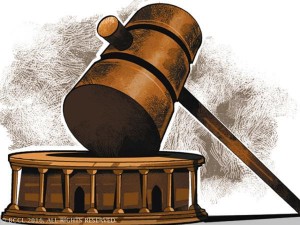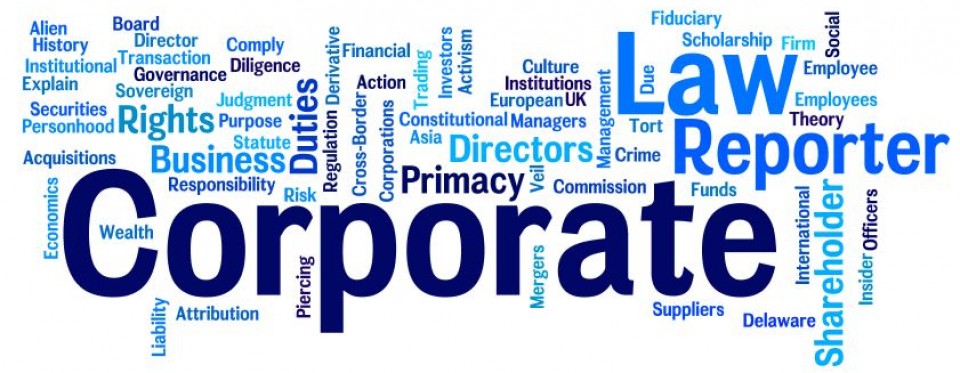In this blog post, Sunidhi, a student of Rajiv Gandhi National University of Law, Patiala has written about the lifting of the Corporate Veil. The blog post highlights the grounds on which the courts have lifted it.
Introduction
A company under Corporate Law has a separate legal entity different from its owners. In other words, it is an artificial person created by law, i.e., a juristic person. It can sue and be sued by others. It can also enter into contracts independent of the owners.
The main motivation for floating a company is the limited liability of the investors. By this, the liability of the investor/shareholder is limited to his/her contribution in the shares of the company. While this is an incentive for the investors but it becomes riskier for creditors to grant a loan to the company as they can recover their debts from company assets only. This advantage has been widely misused by investors to meet their selfish interests. They indulge in illegal activities under the garb of a company to avoid liability.
To protect the interest of the creditors, the concept of ‘Lifting or Piercing the Corporate Veil’ was developed to hold the shareholders of the company liable for its obligation.
What Does Lifting The Corporate Veil Mean?
Corporate Veil is a legal concept that separates the identity of a company from its shareholders. It safeguards the shareholders from being personally held liable for the liabilities of the company. This veil can be penetrated by the courts when it is found that the company is not working according to the mercantile law but is being used to conduct illegal or prohibited activities.
Lifting of the Corporate Veil occurs when the courts decide to treat the rights and obligations of the company as that of its shareholders. Usually, the company is treated as a separate person and is the sole beneficiary of its gain and solely responsible for its debts. But when the shareholders blur the distinction between the company and the shareholder then the courts lift the veil to see the real motive for the action. If it is found that the shareholders under the garb of the company are accomplishing their selfish interests by fooling others, then they are directly held responsible for their acts by piercing the veil.
Origin Of The Corporate Veil Doctrine
The doctrine of Lifting the Corporate Veil owes its origin to the concepts of Separate Legal Entity and Limited Liability. The company is an entity different from its shareholders. Therefore, the shareholders’ liability is limited to their contribution in the shares of the company. But when the corporate veil is lifted the shareholders become personally liable, and the liability of the shareholders becomes unlimited for the liabilities of the company.
The concept of Limited Liability was developed in the 17th century in England. Before that, people were afraid of investing in companies as they believed that it may land them into unlimited liabilities for the acts of their partners as well. With the passage of time investment requirements increased but people were reluctant to invest due to high risk. So, to boost the investment the concept of limited liability was introduced.
With the inception of the principle of limited liability and separate legal entity the position of the investors became safer but the risk for creditors increased. The creditors could recover their loan amount from the assets of the company only, and they could not hold the shareholders liable for their debts. This has the probable effect of covering the shareholder’s risk while, consequently, their chance for gain is unconditional. Evidently, corporations exist mainly to protect their shareholders from personal liabilities for the debts of the company.
The shareholders widely misused this advantage. To protect the creditors from fraudulent activities of the shareholders the doctrine of Lifting the Corporate Veil was developed.
Grounds For Lifting The Veil
The Corporate Veil has been lifted by the courts on the following grounds:
- Fraud: Fraud is when the owners of a corporation merely use the company as a window dressing to escape legal and fiduciary obligations. When the companies are used for committing fraud, the courts pierce the veil and make the investors liable for their acts. In Gilford Motor Co. v. Horne, the employee signed a covenant not to solicit customers of the company after leaving it. He formed another company after leaving the job and took some of the clients of the company with him. The court lifted the corporate veil and held him liable for the fraud committed by him.
- Agency: The concept of Separate Legal Entity does not mean that the company will act as an agent of the shareholders. Where the company is an agency or trust for someone, and the corporate facade is used to cover that up the courts have pierced the veil. In re R.G. Films Ltd., an American company made a film in India in the name of a British company. But 90% of the shares of the company were held by the President of an American Company. Therefore, the Board of Trade refused to register it as British film because the British company acted merely as an agent of an American company.
- Against Public Policy: When a company has been formed to accomplish an act that is against public policy, the courts have lifted the corporate veil to punish the offenders. For example, in the case of Connors Bros v. Connors, the principle was applied against the Managing Director. The company was de facto under the control of a German. Germany was at war with England at that time. The company was not allowed to work as that would have meant giving money to the enemy’s company. It was considered against public policy.
- Evade Taxes: Where the garb of a company has been used to evade taxes, the corporate veil has been lifted to catch hold of the evaders. In the Dinshaw Manakjee Petit case, the accused was a wealthy man and to avoid tax liability he formed four private companies to hold his investments as an agent. The company then pretended to provide that amount to him in the form of a loan. This way, his tax liability was reduced. The court pierced the wall stating that company was nothing more than the accused, formed to avoid tax. Therefore, he was held liable to pay tax.

- Avoid Welfare Legislation: Where the garb of a company has been used to escape liability under welfare legislation, the veil has been lifted. In Workmen of the Associated Rubber Industry Ltd., Bhavnagar v. The Associated Rubber Industry Ltd., Bhavnagar and another, it was found out that the company was floated to reduce the amount paid as the bonus to the workers, the court lifted the veil to hold the culprit accountable.
- Group Enterprises: The argument of group enterprises is to the effect that in certain cases, some companies that act as a corporate group may operate to hide behind the advantages of limited liability to the disadvantage of their creditors. They may operate in a way that the parent entity is not clearly distinguishable from the subsidiaries. The argument for piercing the corporate veil in these circumstances is to ensure that a corporate group which seeks the advantages of limited liability must also be ready to accept the corresponding responsibilities.[1]
Concluding Remarks
This principle has been accepted in most Common Law Countries. It has remained controversial till date and may remain so for many more years to come because of the lack of uniformity as it depends upon the discretion of the court to lift the veil or not. The courts respect the principle of limited liability and separate legal entity, the only motive of the courts to lift the veil is to restore justice.
[divider]
Footnotes:
[1] Bluecorp Pty Ltd v ANZ Executors and Trustee Co Ltd, (1995) 18 ACSR 566.











